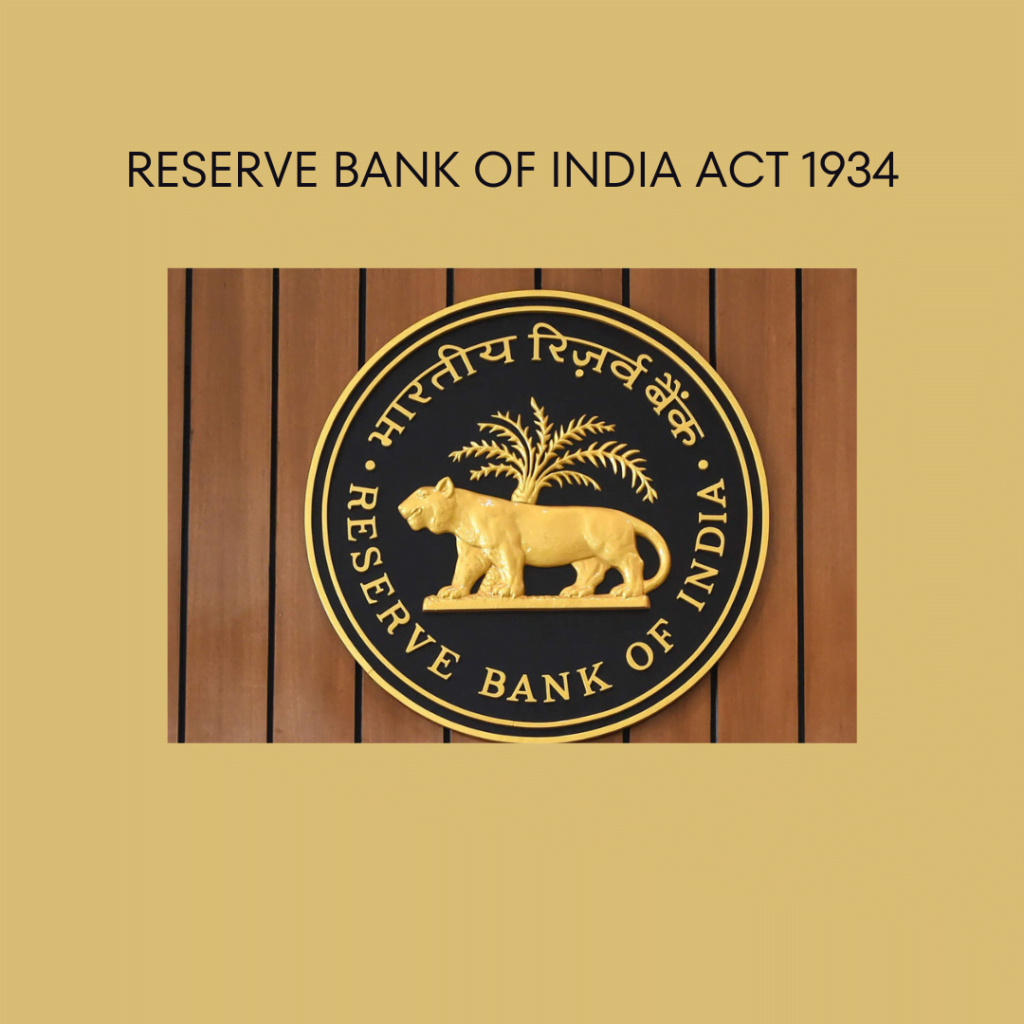Banking laws are the backbone of the financial sector, ensuring stability and regulating financial institutions. In India, the RBI ACT 1934, holds significant importance in governing the operations of banks. In this article, we will delve into the main sections of the RBI Act and their crucial role in the Indian banking system. Join us as we explore the key provisions of this act on Bankopedia.in.

Section 3: Constitution and Incorporation of the Reserve Bank of India
The RBI Act 1934, establishes and incorporates the Reserve Bank of India (RBI) as India’s central banking institution. Section 3 defines the objectives of the bank, which include regulating banknotes, maintaining financial stability, and overseeing the currency and credit system. This section also highlights the structure of the RBI, including the appointment and functions of the central board, the governor, and other key officials.
Section 4: Capital and Reserves of the Reserve Bank
Section 4 of the RBI Act addresses the capital and reserves of the Reserve Bank of India. It outlines the authorized and subscribed capital, as well as the government’s shareholding in the bank. This section also empowers the central government to adjust the RBI’s capital as needed to ensure its operational efficiency.
Section 17: Functions of the Reserve Bank
Section 17 enumerates the critical functions of the Reserve Bank of India. As the banker to the government and other banks, the RBI manages the country’s foreign exchange reserves, regulates and supervises banking operations, and controls the credit system to maintain stability. Furthermore, this section grants the RBI the authority to issue and manage currency notes and coins, ensuring a reliable and secure monetary system.
Section 21: Power to Control Advances by Banking Companies
Section 21 bestows the Reserve Bank of India with the power to regulate and control advances made by banking companies. By issuing directions to banks concerning credit policies, interest rates, and other lending aspects, the RBI effectively manages monetary stability and mitigates inflationary pressures. This provision plays a vital role in maintaining a healthy banking ecosystem.
Section 35A: Power to Inspect
Section 35A empowers the Reserve Bank of India to conduct inspections and inquiries in banks. This provision enables the RBI to ensure compliance with banking regulations, evaluate the financial health of banks, and take necessary actions to safeguard depositors’ interests and maintain overall stability in the banking system. Regular inspections contribute to a secure and transparent banking environment.
Conclusion:
The RBI Act, 1934, stands as a robust legal framework that governs the Indian banking system and the operations of the Reserve Bank of India. By understanding the main sections of this act, including Section 3, Section 4, Section 17, Section 21, and Section 35A, we gain insights into the roles, responsibilities, and powers of the central bank. Complying with the provisions of the RBI Act ensures a well-regulated financial sector, promoting financial inclusiveness, protecting depositor interests, and driving economic growth. Stay informed about the essential aspects of the RBI Act on Bankopedia.in, your go-to resource for banking information and insights.











1 thought on “Understanding the RBI Act 1934”